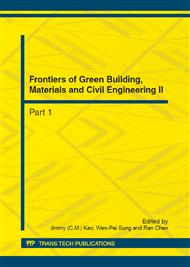p.748
p.753
p.757
p.762
p.770
p.776
p.780
p.785
p.791
Technology of Temperature Measurement in Concrete Bridge Pier
Abstract:
In order to accurately get the concrete pier temperature field, this paper briefly introduces the types, advantages and disadvantages, development of temperature sensors and the composition, function and measurement accuracy of LTM-8663 intelligent temperature monitoring system. The system has high measurement precision, so we can measure the temperature field by it. In order to certify the rationality of test methods, taking a concrete pier section model as an example, we use the system to measure its sunshine temperature fields in different ways of embedding sensor. According to the comparative analysis of sunshine temperature fields measured in pier section model, we get useful conclusions and recommendations to be provided references for the concrete temperature measurement in piers and other structures.
Info:
Periodical:
Pages:
770-775
Citation:
Online since:
August 2012
Authors:
Price:
Сopyright:
© 2012 Trans Tech Publications Ltd. All Rights Reserved
Share:
Citation:


